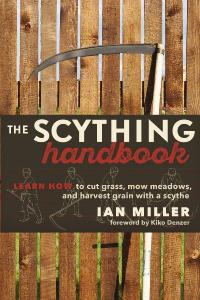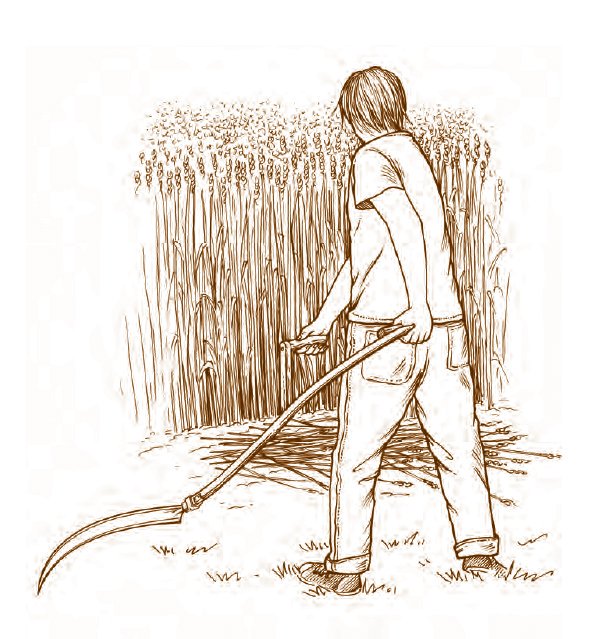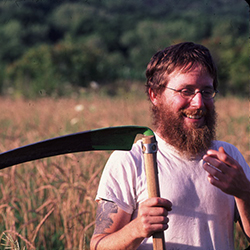

 8
8








 6
6




pick up your scythe and make hay from your lawn to trade with someone who has animals for milk. Use your scythe to harvest small grains in part of your garden and get chickens to turn the grain (and your kitchen scraps and bugs in your garden) into eggs and meat. Swap your lawn mower or maybe even your small tractor for a scythe and use the cuttings for sheet mulching that will allow you to grow more of your own food without importing fertility and increase your soil’s organic matter. Pick up your scythe and start composting for real; add meaning to your life; and spend more time outdoors. Get to know your mind, body and environment and join with other scythe owners to mow larger and larger areas and have more fun. Above all, have more fun.







 2
2





The coarser and woodier the plants that you want to mow, the shorter, sturdier and thicker the scythe blade and its cutting edge will need to be. Conversely, the softer, more succulent and shorter the material you want to mow(and the smoother the surface of the soil), the longer the blade can be and the sharper and thinner you can peen the edge.







 2
2




 Enjoy being the resident Pemies Author.
Enjoy being the resident Pemies Author.
Author of Septic Tank Options and Alternativesand Permaculture Guide to Reed Beds, published by Permanent Publications, UK.
 2
2





 2
2




Ian Miller
Author of The Scything Handbook (New Society Publishers in NA, Filbert Press rest of world), Das Sense-Handbuch (Haupt Verlag)
 2
2





 2
2




 2
2





 1
1
















 - fresh out of the package sythe!
- fresh out of the package sythe!
It's about becoming like granny.




lets share great techniques for permaculture (cold climates!?). Join our chat on Permaculture Montana on facebook
 1
1




















 1
1








Anthony Noble wrote:Where has everyone bought their scythes? What did you choose and why? Are you happy with it?
I bought mine from The Marugg Company. I bought the 26" grass blade with a curved hickory snath.
I bought a second scythe from Botan Anderson at One Scythe Revolution to teach students at Earlham College. I'm hoping to start a mini course about steel tools. The above book gives so much great information about steel, its history and many of its dynamics. For the school, we got a Fux Grass blade and a Fux light bush blade. I got the adjustable wood snath so many people can use it comfortably.
I've had to repair my Marugg blade so many times from hitting rocks and wire, I'm afraid the metal is getting too thin. I'm considering filing everything down so I can start with a new edge. I peen with a rounded peening hammer and a flat anvil. For the school, I use the cheeter anvil jig which has worked pretty good. I haven't had to repair many cracks (probably because I make sure students are a lot more careful than I am!)










